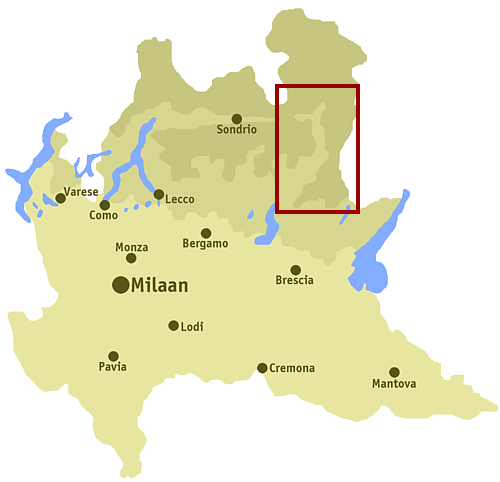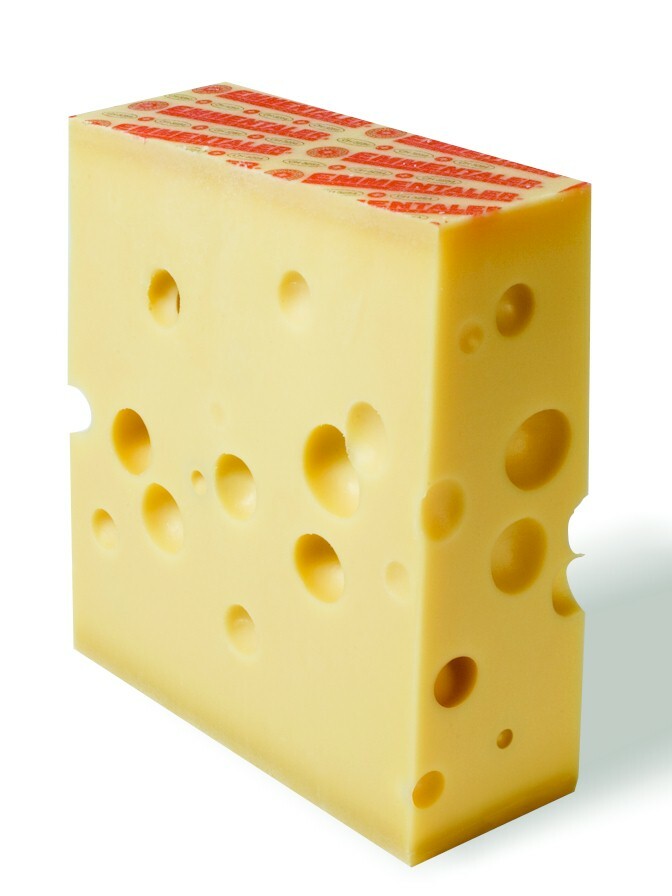|
Rosa Camuna
Rosa Camuna ( lmo, Roeusa Camuna) is an Italian mild semi-hard paste cheese made with partially skimmed cow's milk. Its shape and name come from the Camunian rose of Val Camonica where the cheese is produced. It has an ivory white color inside with uniformly spaced tiny eyes, and a soft bloomy rind A bloomy rind is a cheese rind that is soft and fluffy and white in color. Cheese that uses ''Penicillium camemberti'' is prone to developing bloomy rind. Bloomy rind cheese can be described as having "mild and lactic" flavors that may resemble on .... It has a mild taste and melts very well. at References [...More Info...] [...Related Items...] OR: [Wikipedia] [Google] [Baidu] |
Italy
Italy ( it, Italia ), officially the Italian Republic, ) or the Republic of Italy, is a country in Southern Europe. It is located in the middle of the Mediterranean Sea, and its territory largely coincides with the homonymous geographical region. Italy is also considered part of Western Europe, and shares land borders with France, Switzerland, Austria, Slovenia and the enclaved microstates of Vatican City and San Marino. It has a territorial exclave in Switzerland, Campione. Italy covers an area of , with a population of over 60 million. It is the third-most populous member state of the European Union, the sixth-most populous country in Europe, and the tenth-largest country in the continent by land area. Italy's capital and largest city is Rome. Italy was the native place of many civilizations such as the Italic peoples and the Etruscans, while due to its central geographic location in Southern Europe and the Mediterranean, the country has also historically b ... [...More Info...] [...Related Items...] OR: [Wikipedia] [Google] [Baidu] |
Val Camonica
Val Camonica (also ''Valcamonica'' or Camonica Valley, Eastern Lombard: ''Al Camònega'') is one of the largest valleys of the central Alps, in eastern Lombardy, Italy. It extends about from the Tonale Pass to Corna Trentapassi, in the commune of Pisogne near Lake Iseo. It has an area of about Area of the municipalities, excluding Val di Scalve and 118,323 inhabitants.Sum of ISTAT data of communes at 31 December 2007 The River Oglio runs through its full length, rising at Ponte di Legno and flowing into Lake Iseo between Pisogne and Costa Volpino. Almost all of the valley is included in the administrative territory of the province of Brescia, except for Lovere, Rogno, Costa Volpino and the Val di Scalve, which belong to the province of Bergamo. Since 1979, the rock drawings located along the valley are a UNESCO World Heritage Site, while the entire valley became a UNESCO World Biosphere Reserve in 2018. Etymology ''Val Camonica'' is derived from the Latin ... [...More Info...] [...Related Items...] OR: [Wikipedia] [Google] [Baidu] |
Lombardy
(man), (woman) lmo, lumbard, links=no (man), (woman) , population_note = , population_blank1_title = , population_blank1 = , demographics_type1 = , demographics1_footnotes = , demographics1_title1 = , demographics1_info1 = , demographics1_title2 = , demographics1_info2 = , demographics1_title3 = , demographics1_info3 = , timezone1 = CET , utc_offset1 = +1 , timezone1_DST = CEST , utc_offset1_DST = +2 , postal_code_type = , postal_code = , area_code_type = ISO 3166 code , area_code = IT-25 , blank_name_sec1 = GDP (PPS) , blank_info_sec1 = €401 billion (2019) , blank1_name_sec1 = GDP per capita , blank1_info_sec1 = €39,700 (2019) $51,666 (2016) (PPP) , blank2_name_sec1 = HDI (2019) , blank2_info_sec1 = 0.912 · 4th of 21 , blank_name_sec2 ... [...More Info...] [...Related Items...] OR: [Wikipedia] [Google] [Baidu] |
Prodotto Agroalimentare Tradizionale
''Prodotto agroalimentare tradizionale'' (PAT) is an official approval for traditional Italian regional food products similar to the Protected Geographical Status of the European Union. A list of approved products is published by the Ministry of Agricultural, Food and Forestry Policies. It lists only products that do not qualify for pan-European approval, and as such PAT is only applicable within Italy. The denomination is attributed by each regional government, in collaboration with the Ministry of Agricultural, Food and Forestry Policies. In 2019 a total of 5128 products carried PAT certification; the region with the largest number of approved products was Campania, with 531. Classification PAT products are classified in ten categories: drinks; meats; condiments; cheeses; oils and fats; vegetables and vegetable products; pasta, bread and patisserie; delicatessen; fish and seafood; and products of animal origin other than those above. See also * List of Italian products ... [...More Info...] [...Related Items...] OR: [Wikipedia] [Google] [Baidu] |
Semi-hard Cheese
There are many different types of cheese. Cheeses can be grouped or classified according to criteria such as length of fermentation, texture, methods of production, fat content, animal milk, and country or region of origin. The method most commonly and traditionally used is based on moisture content, which is then further narrowed down by fat content and curing or ripening methods. The criteria may either be used singly or in combination, with no single method being universally used. The combination of types produces around 51 different varieties recognized by the International Dairy Federation, over 400 identified by Walter and Hargrove, over 500 by Burkhalter, and over 1,000 by Sandine and Elliker. Some attempts have been made to rationalise the classification of cheese; a scheme was proposed by Pieter Walstra that uses the primary and secondary starter combined with moisture content, and Walter and Hargrove suggested classifying by production methods. This last scheme results ... [...More Info...] [...Related Items...] OR: [Wikipedia] [Google] [Baidu] |
Cheese
Cheese is a dairy product produced in wide ranges of flavors, textures, and forms by coagulation of the milk protein casein. It comprises proteins and fat from milk, usually the milk of cows, buffalo, goats, or sheep. During production, milk is usually acidified and the enzymes of either rennet or bacterial enzymes with similar activity are added to cause the casein to coagulate. The solid curds are then separated from the liquid whey and pressed into finished cheese. Some cheeses have aromatic molds on the rind, the outer layer, or throughout. Over a thousand types of cheese exist and are produced in various countries. Their styles, textures and flavors depend on the origin of the milk (including the animal's diet), whether they have been pasteurized, the butterfat content, the bacteria and mold, the processing, and how long they have been aged. Herbs, spices, or wood smoke may be used as flavoring agents. The yellow to red color of many cheeses is produc ... [...More Info...] [...Related Items...] OR: [Wikipedia] [Google] [Baidu] |
Skimmed Milk
Skimmed milk (British English), or skim milk (American English), is made when all the milkfat is removed from whole milk. It tends to contain around 0.1% fat. Background Historically, skimmed milk was used for fattening pigs, and was recommended as "not only the very best supplement for growing pigs, but is of almost equal value for fattening purposes" as it "furnishes a complete protein" and makes the feed "more palatable". Terminology In the United Kingdom, milk is traditionally marketed and labelled as follows: * Whole milk (around 3.0–4% fat) – Plastic bottles marketed in blue packaging. * Semi-skimmed milk (around 1.8% fat) – Plastic bottles are marketed in green packaging. * Skimmed milk (around 0.1% fat) – Plastic bottles are marketed in red packaging. * Channel Island milk (around 5–5.5% fat) Often referred to as gold top, although this varies. Additionally, some supermarkets in the UK now market milk as: * 1% fat milk – Normally sold in purple or or ... [...More Info...] [...Related Items...] OR: [Wikipedia] [Google] [Baidu] |
Camunian Rose
The Camunian rose ( Italian: Rosa camuna, Lombard: Rœsa camuna) is the name given to a particular symbol represented among the rock carvings of Camonica Valley (Brescia, Italy). It consists of a meandering closed line that winds around nine cup marks. It can be symmetrical, asymmetrical or form a swastika. Meaning and variations There are many theories about its meaning, Emmanuel Anati suggests that it might symbolize a complex religious concept, perhaps a solar symbol linked to the astral movement. In Val Camonica this motif dates back to the Iron Age, particularly from the 7th to 1st centuries BC. There is only one doubtful case datable at the Final Bronze Age (1,100 BC). These figures are placed mainly in the Middle Camonica Valley (Capo di Ponte, Foppe of Nadro, Sellero, Ceto and Paspardo), but numerous cases are in the Low Valley too ( Darfo Boario Terme and Esine). The motif has been deeply studied by Paola Farina, who created a corpus of all the "camunian roses" kno ... [...More Info...] [...Related Items...] OR: [Wikipedia] [Google] [Baidu] |
Eyes (cheese)
Eyes are the round holes that are a characteristic feature of Swiss-type cheese (e.g. Emmentaler cheese) and some Dutch-type cheeses. The eyes are bubbles of carbon dioxide gas. The gas is produced by various species of bacteria in the cheese. Swiss cheese In Swiss-type cheeses, the eyes form as a result of the activity of propionic acid bacteria (''propionibacteria''), notably ''Propionibacterium freudenreichii'' subsp. ''shermanii''.P.L.H. McSweeney, ''Biochemistry of Cheese Ripening: Introduction and Overview'', in: Fox, p. 349 These bacteria transform lactic acid into propionic acid and carbon dioxide, according to the formula: :3 Lactate → 2 Propionate + Acetate + CO2 + H2OT. Beresford, A. Williams; ''The Microbiology of Cheese Ripening'', in: Fox, p. 303 The CO2 so produced accumulates at weak points in the curd, where it forms the bubbles that become the cheese's eyes. Not all CO2 is so trapped: in an cheese, about 20 L CO2 remain in the eyes, while 60 L rem ... [...More Info...] [...Related Items...] OR: [Wikipedia] [Google] [Baidu] |
Bloomy Rind
A bloomy rind is a cheese rind that is soft and fluffy and white in color. Cheese that uses ''Penicillium camemberti'' is prone to developing bloomy rind. Bloomy rind cheese can be described as having "mild and lactic" flavors that may resemble onion or mushroom. They are described as being "ripened from the outside," and usually have creamy textures. Brie cheese is a type of cheese prone to bloomy rind. See also * Types of cheese There are many different types of cheese. Cheeses can be grouped or classified according to criteria such as length of fermentation, texture, methods of production, fat content, animal milk, and country or region of origin. The method most com ... References Characteristics of cheese {{cheese-stub ... [...More Info...] [...Related Items...] OR: [Wikipedia] [Google] [Baidu] |
Cow's-milk Cheeses
Milk is a white liquid food produced by the mammary glands of mammals. It is the primary source of nutrition for young mammals (including breastfed human infants) before they are able to digest solid food. Immune factors and immune-modulating components in milk contribute to milk immunity. Early-lactation milk, which is called colostrum, contains antibodies that strengthen the immune system, and thus reduces the risk of many diseases. Milk contains many nutrients, including protein and lactose. As an agricultural product, dairy milk is collected from farm animals. In 2011, dairy farms produced around of milk from 260 million dairy cows. India is the world's largest producer of milk and the leading exporter of skimmed milk powder, but it exports few other milk products. Because there is an ever-increasing demand for dairy products within India, it could eventually become a net importer of dairy products. New Zealand, Germany and the Netherlands are the largest exporters o ... [...More Info...] [...Related Items...] OR: [Wikipedia] [Google] [Baidu] |



.jpg)

.jpg)

.jpg)